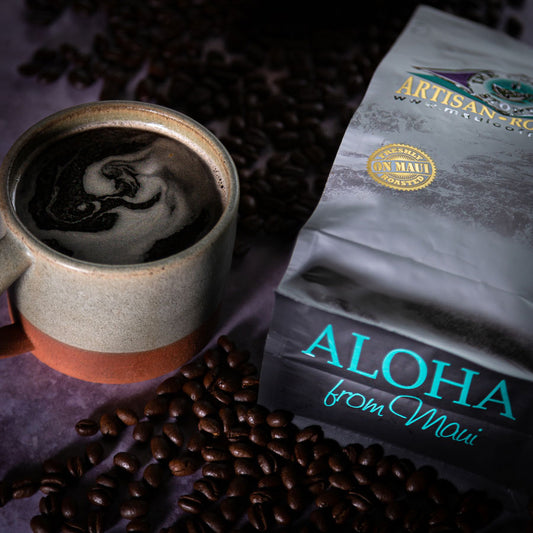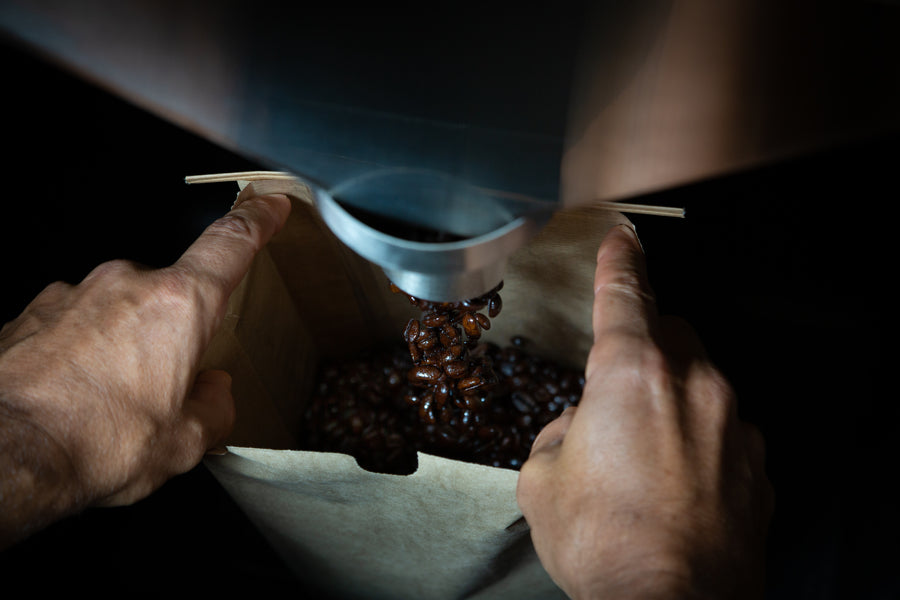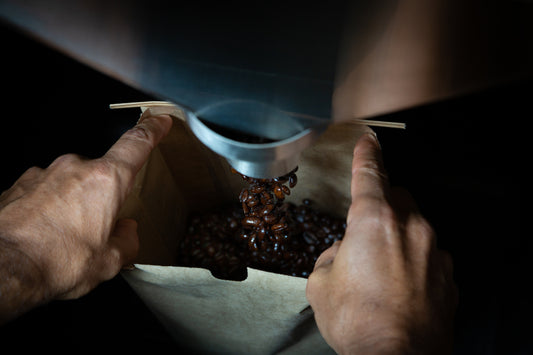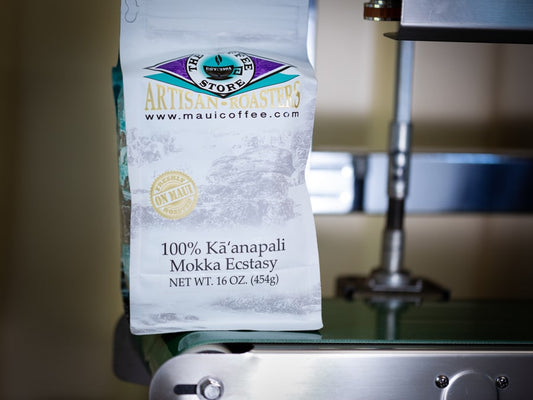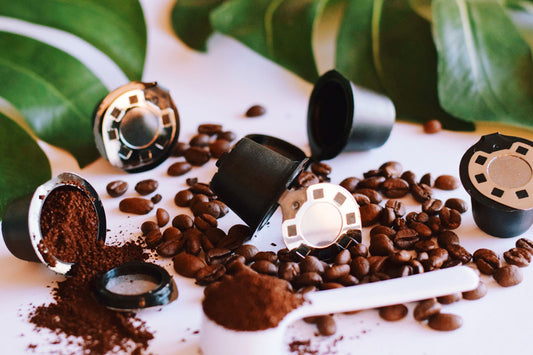How to find your favorite coffee
You're on a quest to find the tastiest coffee. The world of coffee experts, unfortunately, is committed to making your quest as confusing as possible.
Remember, the ultimate expert is you! Your tastes and preferences determine which coffee is best for you. It's ok if you love coffee that self-proclaimed aficionados look down on. It's ok to buck the conventional wisdom. In fact, it's great! There's a wide world of wonderful coffee out there and diversity of taste makes it better.
With that in mind, today we're going to talk about the different roast degrees - light, medium and dark roasts. We're not going to tell you which is best - that's up to you. Instead, we're going to outline some of the differences and dispel some of the misinformation that's out there. Read on!

Coffee roasting
To understand what a light roast, medium roast or dark roast is, you need to understand a bit about the coffee roasting process.
Unroasted or 'green' coffee beans are heated inside a roasting machine. As their temperature increases, their moisture content evaporates. Their color starts to change, fading to a pale yellow before developing a light brown color.
Listen to the beans as they reach 385 degrees Fahrenheit. They emit an audible crack similar to popcorn popping. This is the 'first crack' and it occurs as pressure from the evaporated moisture inside the roasting coffee breaks through the cell walls of the beans. The first crack marks the point where the coffee reaches the drinkable light roast phase.

Continue roasting the coffee and the color will continue to darken. The first crack will fade away, and chemical reactions that influence the taste, aroma and color of the beans will accelerate. The beans will get visibly bigger as gases like carbon dioxide build up inside. By the time the beans reach 440 degrees Fahrenheit, these gases will break through the beans' cell structure, and you will hear the 'second crack'. At this point, the beans are at a medium roast degree.
If you keep roasting the coffee, the natural oils will start to emerge from the breaks in the beans' cell structure. The coffee will get darker and darker as the second crack gets more intense. This is dark roast coffee. By the time the second crack ends altogether, the coffee is quite dark - all but the very darkest roasts end well before the second crack is finished.
As the roasting coffee passes through these phases, the flavors and aromas change dramatically. Let's look at some of the usual characteristics of light roast, medium roast and dark roast coffees.
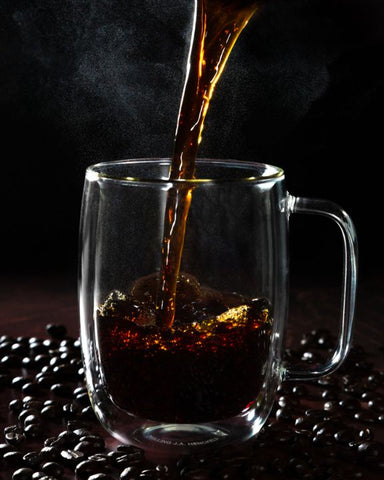
Light Roast Beans
Appearance:Light roast coffee beans are light brown in color, dry in appearance without visible oils on the surface. They are smaller than their darker counterparts. The chaff - the flaky seed material in the cleft of the bean - is usually light in color and the bean itself may have a slightly mottled exterior.
Aroma:
The aroma of light roast beans can vary a lot from coffee to coffee. It's usually sweet and malty, and botanical notes are often reflective of the coffee's unique characteristics. Floral, herbal and vegetal aromas are common, and they can be intoxicating, especially with the freshest coffee. These botanical aromas come from volatile organic compounds that dissipate after roasting, so light roasts lose a lot of their nuance when they get stale.
In the cup:
Light roasts tend to have delicate flavors and light body. Light roasts also have higher acidity than darker roasts. This can be wonderful... or terrible. Delicious light roast brews have botanical flavor notes that complement the acidity beautifully. Fruity notes become 'juicy', floral notes become 'piquant'... but inexpert roasting can lead to sour acidity and undeveloped flavors.
Also known as:
Cinnamon Roast (light), New England Roast (medium-light)
Medium Roast Beans
Appearance:
Medium roast coffee beans are chocolate-brown in color with a smooth surface. They range from dry to slightly glossy immediately after roasting, with some oils likely to emerge in the days and weeks to follow. The beans are a bit bigger than they would be at a light roast degree and are therefore slightly less dense.
Aroma:
Medium roasts can retain some of the botanical notes of light roast aroma. Fruity and herbal notes are prominent, while the maltiness and the delicate floral notes are likely to give way to caramel sweetness and chocolatiness. The best medium roasts have aroma that is both balanced and complex.
In the cup:
Compared to a light roast, a medium roast brew has heavier body, milder acidity and a sweetness that is less fruit and more caramel. You won't taste the level of dark chocolate bitterness that you will with a dark roast, but some roasty bitter flavors will develop. Fruit, chocolate and caramel are often the anchoring flavor notes, and the best roasts will have a balanced palate of 'light' and 'dark' flavors.
Also Known As:
American Roast, City Roast, City+ Roast, Full City Roast, Full City+ Roast (medium-dark)
Dark Roast Beans
Appearance:
Dark roast beans are dark brown and shiny, with a surface that gets oily over time, especially at the darkest degrees. The beans are big in size and low in density.
Aroma:
There aren't the same delicate botanical notes that feature so well at the lighter degrees. Instead, darker notes prevail. Dark chocolate is the most common note in a dark roast aroma, but you may also perceive pipe tobacco, molasses, leather, dried fruit and spice.
In the cup:
Darks roasts have the least acidity and the most bitterness. They also have the heaviest body and may be described as 'syrupy' or 'viscous'. They can be sweet and chocolaty, or they can be smoky and astringent. Overall, they make for a full-flavor brew that is bold and rich with a lingering aftertaste.
Also Known As:
French Roast, Italian Roast, Spanish Roast, Continental Roast

What About Caffeine Content?
-Roast degree is not a useful predictor of caffeine content.
-Still, there's some truth to the conventional wisdom that light roast coffee is more caffeinated.
How can both of those statements be true?
It comes down to the fact that most coffee drinkers use scoops to measure their coffee for brewing. I mentioned above that light roasted beans are denser and dark roasted beans are larger. A scoop of light roasted coffee has more coffee by weight than the same size scoop of dark roasted coffee. More coffee = more caffeine.
If you want more caffeine, don't try to game it out in your selection of roast degree. Just add more coffee to your brewer. Or drink one more cup.
Trust your Palate, be Skeptical of the Conventional Wisdom
We are living in a golden age of coffee where we enjoy unprecedented access to wonderful coffees from diverse regions the world over. Tasting the uniqueness and diversity of different coffees is a pleasure that coffee-lovers of today can enjoy like never before. This has fueled the resurgent popularity of light roasts.
Light roasts, according to conventional wisdom, have the most subtle flavors and are most reflective of the 'terroir' - the taste bestowed by the singular ecology and climate where the coffee was grown. Dark roasts, it is said, all taste much the same regardless of the coffee's origin.

A good light roast is wonderful and there is some truth to the idea that light roasts most strikingly reflect the coffee's origin. But dark roasts are wonderful too and they can be every bit as nuanced and unique as light roasts. Medium roasts can be the best of all worlds - unique and nuanced and velvety and indulgent.
Whatever your coffee preference, don't let the trends of the day invalidate your personal taste. Light, medium or dark, enjoy your coffee on your own terms. Drip, espresso or pour over, black or light and sweet, your coffee should serve you, not some pundit's expert opinion.
It's a golden age of coffee. Enjoy it!


